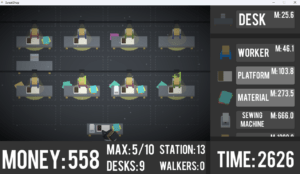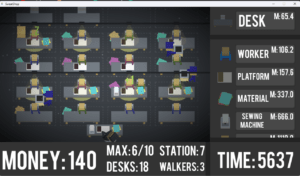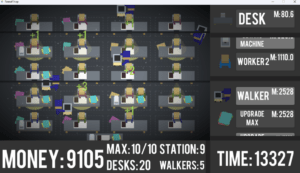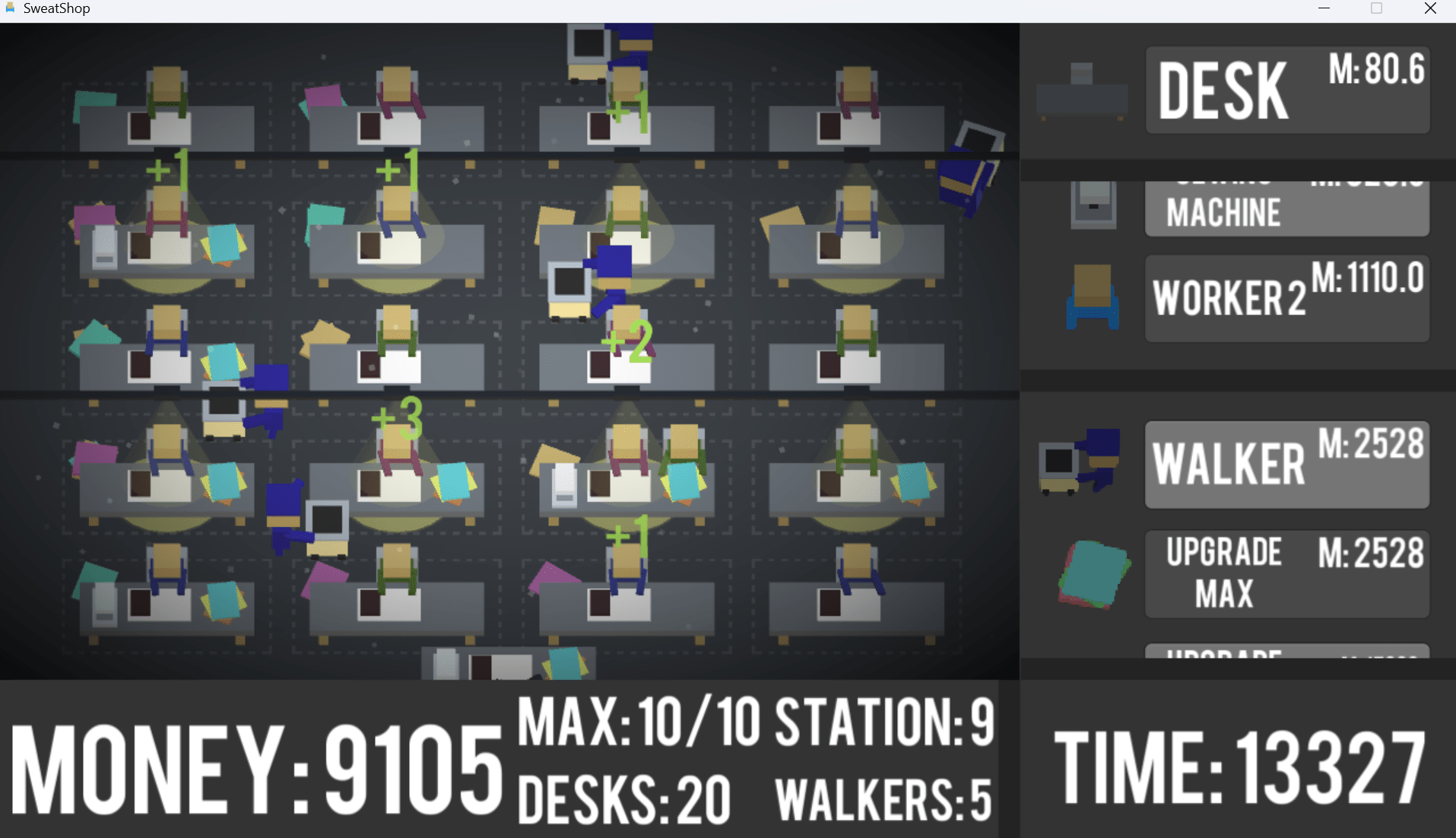Sweat Shop, developed by DUCK and published by Sometimes You is a game in which players build a sweatshop by hiring staff and buying equipment to produce more goods.
Submission is a core aesthetic of the game. The two main mechanics are picking up products by clicking on them and expanding capital by purchasing upgrades from the menu. This creates a singular game state in which the player can easily submit into the mindless routine of clicking on products as they pop up to pass time. It’s notable though that the pull of submission ebbs and flows as the game progresses. Specifically, at the beginning when the player has only “workers” (Figure 1) on the floor, (NPCs that fabricate products) the player is solely responsible for picking things up to make money. This is when I personally felt the most submitted to the game. However, when the pickup process becomes automated with the introduction of NPC “walkers” (Figure 2) that circle the shop to pick up products, the impetus to actively play the game falls off sharply. This could be a commentary on the evolution of sweatshops, but it’s not one I’m sure I would’ve consciously picked up on if I wasn’t analyzing the game in this capacity.

Figure 1

Figure 2
Fantasy is another core aesthetic – though perhaps not as critical – as the player steps into the role of the sweatshop owner. The mechanics are designed such that any upgrade can be purchased at any time if the player has enough money. This introduces interesting strategizing dynamics because as the game evolves, it becomes apparent that there is an optimal order in which to buy and upgrade certain capital. The challenge then becomes designing strategy in this make-believe role to optimize profit.
Overall, I felt the game motivations were more extrinsic than they were intrinsic in that I was more focused on the money and maxing out achievements than I was moved by the pure pleasure of the game. In fact, I found the game quite frustrating after a while because it took forever to make enough money to buy upgrades that provided miniscule returns in increasing the rate at which I made money. Nevertheless, I felt compelled to continue, an experience that is counterproductive towards creating a lusory mindset.
The desired game outcome appears to be information: the game is designed to raise awareness of the makeup, nature, and business of sweatshops. The pairing of submission as an aesthetic is interesting as it could be seen as a meta commentary on the nature of sweatshops in that they are rote, routine environments in ways that aren’t entirely unlike the gameplay experience. In that regard, I think there is a lot of resonance between the teaching objectives and the aesthetics.
Explicit skills can also arguably be viewed as an outcome of the game in that the game provides the player with a conceptual understanding of the drivers, mindset, and motivations of sweatshop owners through having them live that role.





